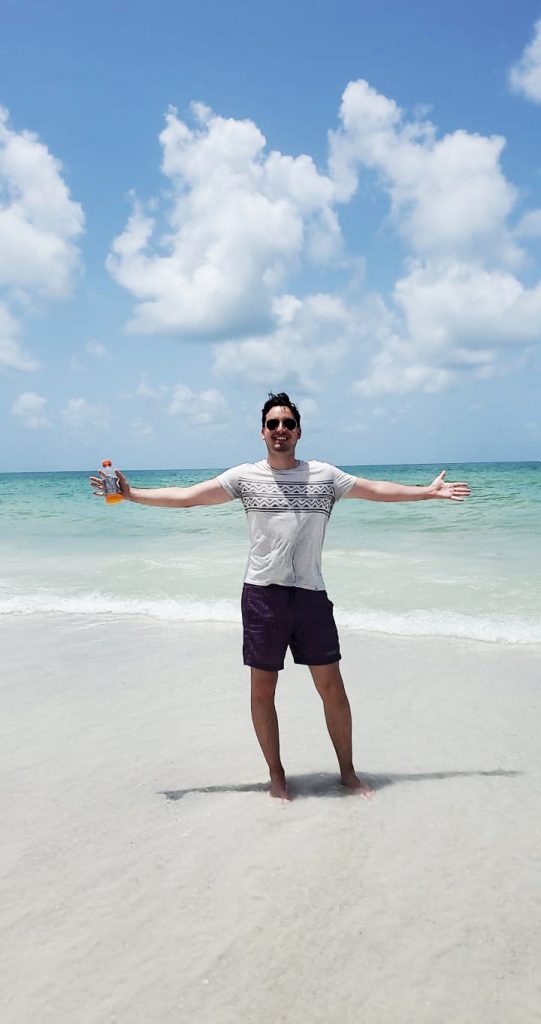Do you ever dream of visiting a country colored by rolling raspberry fields, hand-painted Easter eggs and mountains as far as the eye can see?
This is how Milos Stosic, who first came to the United States at age 17 on a basketball scholarship, described his home country of Serbia. His presentation at the International Student Center Lunch and Learn: Serbia event included facts about Serbia as well as some of his favorite childhood memories and holiday traditions.
Nearly 90% of Serbians are Christian Orthodox, though many Serbian holiday celebrations slightly differ from American traditions. Christmas and Easter, alongside Slava, are the most significant Serbian holidays.
“Easter was definitely my favorite holiday in Serbia because of our egg-painting tradition,” said Stosic. “That’s probably one of the best traditions for kids especially but even for adults as well; it’s something we all enjoy.”
Serbian Christmas, observed January 6 – 7, varies from American Christmas celebrations. One Serbian Christmas tradition is hiding a coin inside a loaf of bread. Slices are served, and whoever finds a coin in his or her slice is considered to be the family’s “provider” for the upcoming year.
Due to the country’s widespread Christianity and sentimentality during the holidays, strangers and friends alike exchange greetings of “Hristos se rodi” (Serbian for “Christ is born”) on Christmas and “Hristos vaskrse” (“Christ is risen”) on Easter.
Slava, a celebration of family saints, dates back roughly 900 years. According to Stosic, each Serbian family has a saint which they believe protects the family throughout the year, and Slava is a time to celebrate the family’s saint.
“For Slava, we prepare more formal food and invite very good friends,” Stosic said. “The family will put a candle in [the cake], and when your best friend comes, you’ll hold the cake and say the prayers and will lift the cake up until you make a little burn on the ceiling. It’s just a tradition that other generations have always done. It’s kind of similar to Thanksgiving, except we burn the ceiling.”
Although there are several differences between American and Serbian traditions, Stosic noted many similarities in style and culture. For example, Stosic remembers watching the popular American film, “Home Alone,” during the Christmas season in Serbia.
Stosic was pleased to find that Americans share the quality of hospitality that he values in Serbian people.
“When I came to the U.S., I experienced nothing but hospitable and friendly people all the time,” Stosic said. “I would say that when visiting Serbia, you are also likely to have a comfortable experience interacting with friendly, hospitable people.”
Some of the largest adjustments were the differences in language and transportation.
“When I lived in Serbia, I lived in the city, so I could take the bus almost any place,” Stosic said. “Here, I lived in an area where you need a car to get anywhere.”
Despite growing up in an urban environment, Stosic spoke fondly of God’s handiwork that can be seen in vast expanses of nature, from winding rivers to the griffon vultures that fly in the Serbian sky.
“We have beautiful nature,” Stosic said. “When I was young, it wasn’t really that popular for Serbian people who live in the city to go hiking and experience nature, but I think it’s becoming more popular now, especially due to pictures on Instagram of people hiking and enjoying the nature.”
The International Student Center hosts frequent events for all students in its office in DeMoss Hall, including coffee tasting from different countries. Follow the ISC on Instagram.
Kacey Martin is a Feature Reporter.
